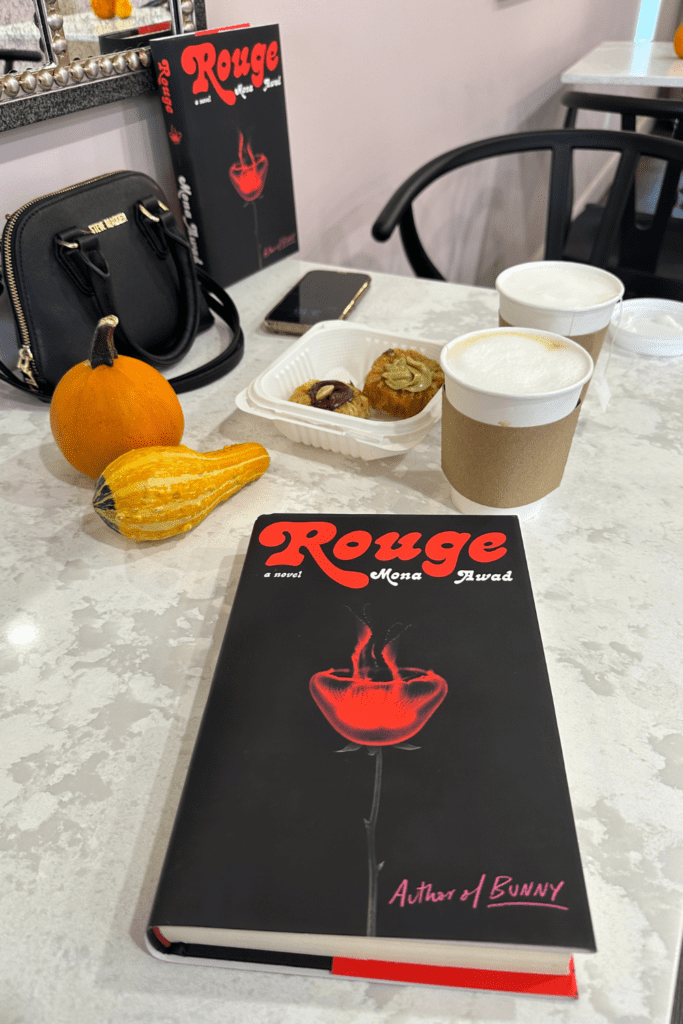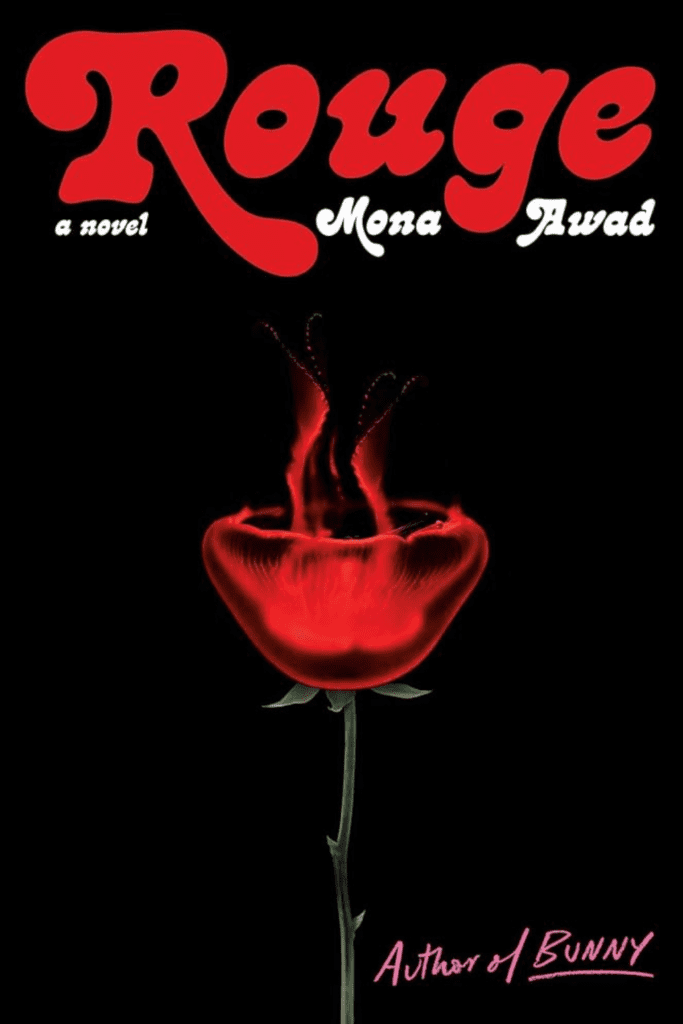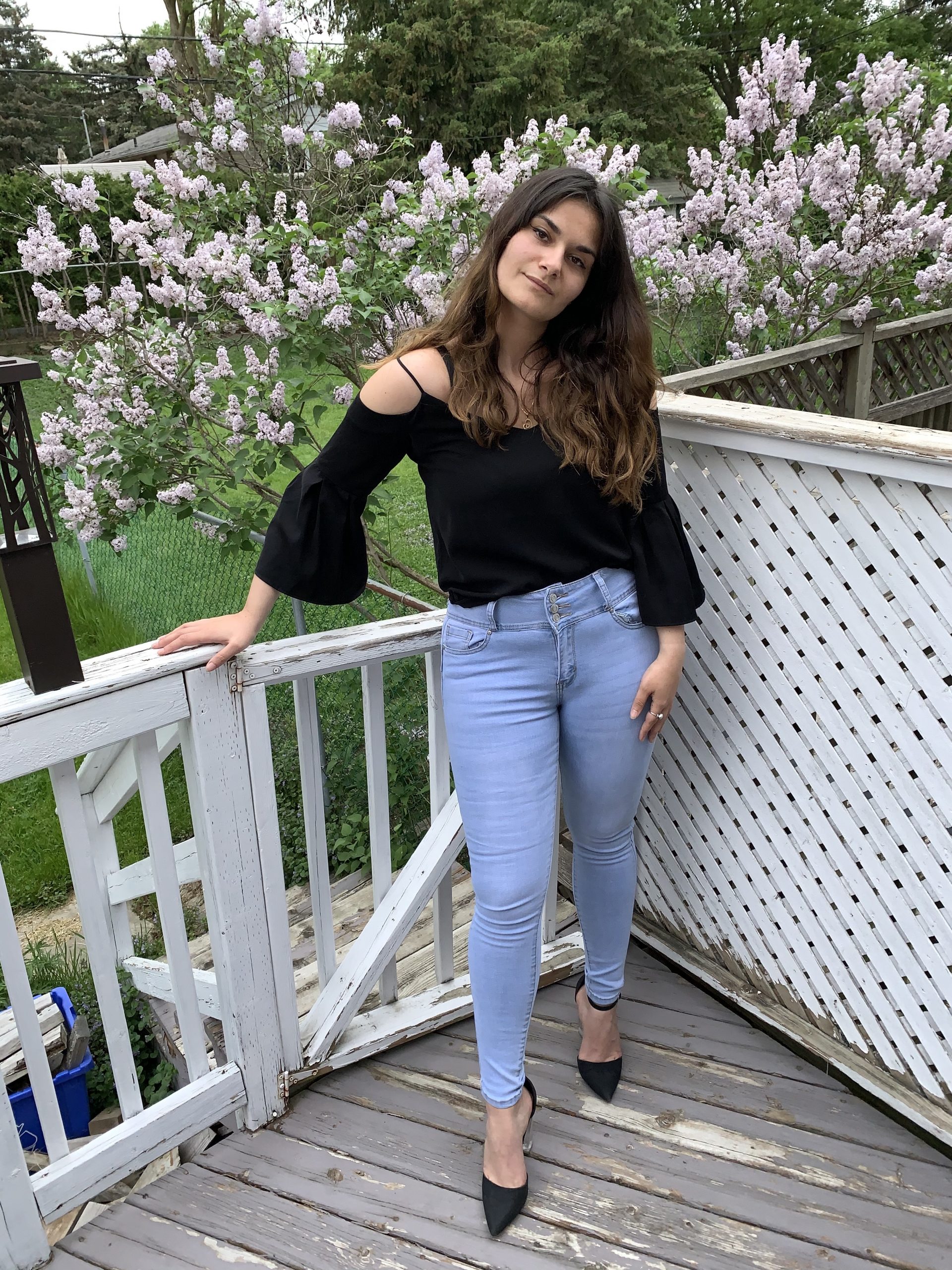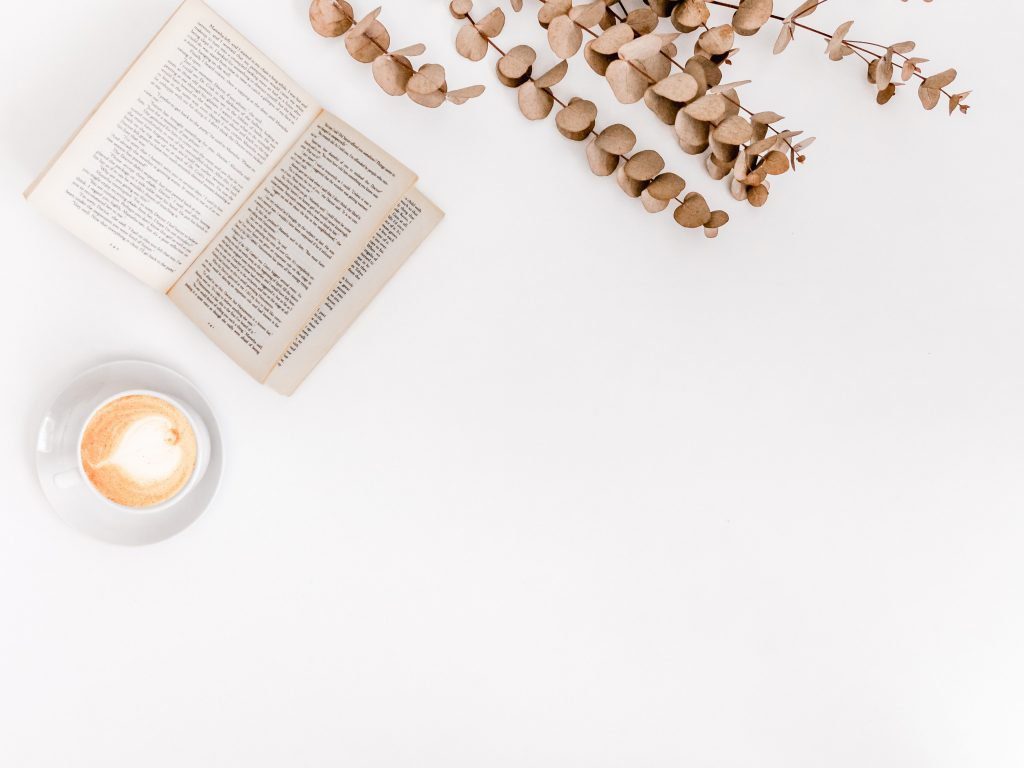This post may contain affiliate links, which means I’ll receive a commission if you purchase through my links, at no extra cost to you. Please read my full disclosure for more information.
“Rouge” is a surreal novel described as Snow White meets Eyes Wide Shut. And this is an accurate description. We follow a young woman named Mirabelle as she grapples with her mother’s sudden death, the same mother who passed down her harmful, all-encompassing obsession with beauty and skincare.

- Date finished: March 29th, 2024
- Pages: 372
- Format: Hardback
- Form: Novel
- Language read: English
- Series: Standalone
- Genre: Horror | Magical Realism | Contemporary
Buy “Rouge”
As I mentioned, “Rouge” follows the unraveling of our main character, Mirabelle. After her mother’s passing, Belle stays in California to clean up her mother’s affairs and apartment. From there, she’s recruited by Rouge, a Spa that promises her she can be her Most Magnificent Self, the very same Maison de Méduse that her mother attended before she went the Way of the Roses.

Besides being about Belle’s grief at losing her mother, “Rouge” is a myth-making novel. It is a distorted Snow White retelling and explores the cult-like beauty-obsessed Spa called La Maison de Méduse. Both worlds intersect beautifully, under a knife’s pressure, like the jellyfish caught inside the rose on the book’s cover, or The Way of Roses as it’s referred to.
Self-discovery is at the core of this novel. Questions ‘Rouge‘ asks: Does Belle’s mother love her? What happened to her? Are beauty treatments all that there are to a woman’s life? Do we constantly have to perform and dress up to be loved and accepted into our society?
We witness as Mirabelle slowly slips away. She dissociates by the news of her mother’s sudden death:
My mother died, I said, like I was reporting the weather. She fell onto some rocks. She was found by a Saint Bernard. (p. 15)
Mirabelle is vulnerable. She watches YouTube videos by this skincare guru called ‘Marva.’ We understand the origins of Belle’s obsession with beauty and youth: her mother Noelle. Marva, however, is presented as a compassionate figure, which is a stark difference from Noelle’s cold demeanor. Marva becomes her surrogate mother and so does the woman in red who runs the Rouge Spa.
It comes in a chilled glass, bubbling like a cauldron. Like drinking stars, Belle, Mother would have said. I always rolled my eyes when she said that, but now look at me with my glass. Marva says alcohol is a collagen destroyer. Dries you up, dries you out. If you want good skin, you must stop drinking immediately, she says sternly. And when I watch Marva say this, I usually have a coffee cup full of champagne in my hand. Sometimes a cigarette in the other, also verboten by Marva.
And I feel scolded, hideous, guilty. But Marva also says, We are human, aren’t we? We all have our little fixes, our little indulgences, balms to this mortal coil, don’t we?
We do, I agree. And there are tears in my eyes at Marva’s compassion. Her understanding of the paradoxes. You should be kinder to yourself, she says to me softly, her eyes staring right into my eyes. Like they know. They know exactly how cruel I can be. (p. 24-25)
In a way, this book becomes skin in itself. We need to wait until the end, peel its layers, and treat the body’s ailment to uncover the truth. To uncover what happened to Belle’s mother at the Rouge cult.
Also, there’s this question of identity – what it’s like to be both – this duality is constantly expressed as the main character Belle is bisexual, biracial, and bilingual. (I can relate, lol. I’m biracial, bisexual, and I also speak French and have a Master’s Degree in French Literature. Mona Awad are you writing about me and my mother? Sure as hell feels like it.)
Essentially, Belle is looking for a place in this world after her mother’s passing. Her life is in Montreal, but her mother had previously moved to California. She knows French, but it’s a constant reminder of her fraught and fractured relationship with her mother. She lives in the real world but gets caught up with Seth, this evil Tom Cruise-like character in the mirror of her mother’s bedroom growing up. The same man is part of the cult she falls prey to.
The book is as much an exploration of the Self as it is of the cult. Awad journeys her readers into Belle’s upbringing, where she learned the importance of beauty, desirability, and aging:
Why do you make the sun so cruel-looking, dear? Ms. Said asked me, looking over my shoulder at my drawing on the desk. Ms. Said is Egyptian like me. But fully, not half. Which is lovely, Mother said.
Because the sun makes us dark, I told Ms. Said. And Ms. Said was concerned. She was already very concerned that most of my drawings featured girls who looked nothing like me. They were either blond and green-eyed like my secret best friend, Stacey, or they were red-haired and blue-eyed like Mother, and they kept looking at themselves in the mirror. There was always a mirror in my pictures, even when they were outside. (p. 145)
Since Mirabelle is half-Egyptian, we understand that she has a darker skin tone than her mother’s porcelain skin. As a young girl, she becomes worried about the sun and aging – fears she’s learned from her mother, the same mother who keeps her youthful and desirable to the men she dates.
All of these little fractures, past and present, create friction between what’s real and what’s imagined.
The repetitive nature of this book (e.g., mirrors constantly shattering) creates this dissociative mirror in which Belle loses herself, turning the novel into a nightmarish fairy tale.
Enhanced by its ‘red’ symbolism – red shoes, red blood; treatments are bloody and we subject ourselves to this pain, almost excessively as to become something that we may be, youthful, beautiful – unrecognizable to ourselves and others. So that all that is left is, the red of death.
Furthermore, the novel being titled “Rouge” highlights not only the separation between Belle and her French-speaking mother but also the violence and lack of ethics of the cryptic cult. They prey on the vulnerable like Noelle, her mother, and then Mirabelle after she loses her mother.
“No dream is ever just a dream,” she says. (p. 107)
The cult is also self-referential at times. The previous passage is a line referencing the classic movie Eyes Wide Shut, starring a young and handsome Tom Cruise, who stumbles on a masked sex cult. Yes, the same Tom Cruise, who we also know to later be part of Scientology. (I watched Eyes Wide Shut before reading the novel and quite enjoyed it.)
The cult uses Buzzwords like “Way of being” and “Most Magnificent Self,” which reminds me of the non-fiction book “Cultish” by Amana Montell, who discusses the language of fanatism and how it preys on its members. As seen in this passage between Belle and the lady in red from Rouge:
She stares at me, looking sadly amused. “Yes. And she was dear to me, too. To all of us here.” She smiles dreamily. “At Rouge.”
“Rouge?”
She holds up her excited red drink in a toast.
“A way of being. A way of becoming one’s Most Magnificent Self. Your mother was among our most prized members.” (p. 108)
In the end, Mirabelle’s grieving journey is an intense, surreal Odyssey. She finally comes to terms that her mother was trying to protect her as best as she could and in the only way, she knew how to. As for Belle, she finally becomes recognizable to herself in the mirror.
Mother, what are you seeing?
I’m going the way of roses, Belle, she said at last, dreamily. Remember the roses? Te souviens-tu?
And my vision filled briefly with a red fog. Mother, you hate roses. (p. 28)
I bought this place for both of us, you know. Besides, what else are you going to do, Belle? A French literature degree is all well and good but come on. (p. 49)
⭐⭐⭐⭐⭐






Leave a Reply